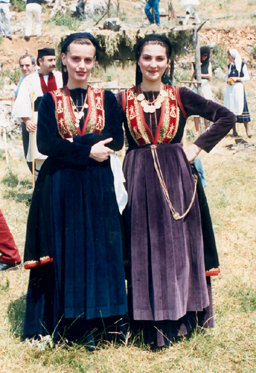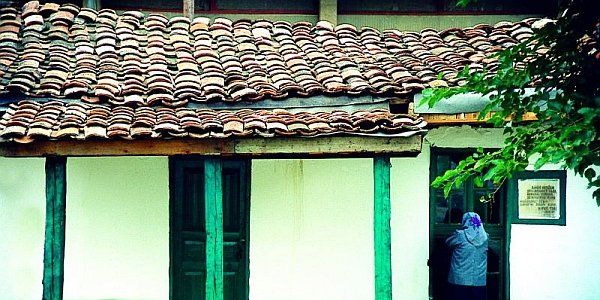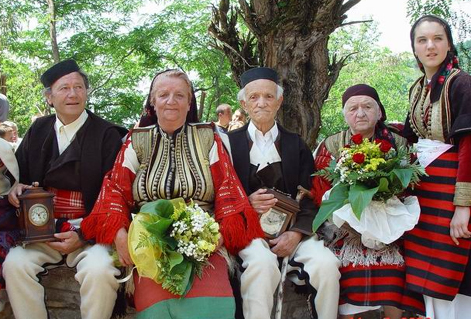|
MACEDONIA
4 DAYS 4 NIGHTS
|
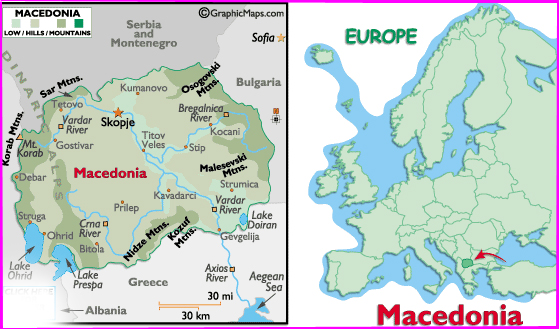
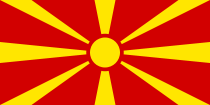 MACEDONIA
MACEDONIA
Country Details
![]()
The historic country of Macedonia was once the Kingdom of Macedon, ruled by
Alexander the Great (355-325 BC) Over many centuries it was exploited
by the Romans, Byzantines, Bulgars and Serbs; finally conquered by the
Ottoman Empire. Macedonia gained its independence peacefully from Yugoslavia
in 1991, but Greece's objection to the new state's use of what it considered
a Hellenic name and its symbols delayed international recognition, which
occurred under the provisional designation of "the Former Yugoslav Republic
of Macedonia."
![]()
![]() In 1995, Greece lifted a 20-month trade
embargo and the two countries agreed to normalize relations. The United
States began referring to Macedonia by its constitutional name, Republic of
Macedonia, in 2004 and negotiations continue between Greece and Macedonia to
resolve the name issue, and to date, it has yet to be decided."
In 1995, Greece lifted a 20-month trade
embargo and the two countries agreed to normalize relations. The United
States began referring to Macedonia by its constitutional name, Republic of
Macedonia, in 2004 and negotiations continue between Greece and Macedonia to
resolve the name issue, and to date, it has yet to be decided."
Quick Facts and Figures
![]()
![]() Official Name Republic of
Macedonia
Official Name Republic of
Macedonia
![]()
![]() Capital City Skopje
(452,000)
Capital City Skopje
(452,000)
![]()
![]() Population 2,114,550
Population 2,114,550
![]()
![]() Flag
here
Flag
here
![]()
![]() Latitude/Longitude 41°
50'N, 22° 00'E
Latitude/Longitude 41°
50'N, 22° 00'E
![]()
![]() Languages Macedonian,
Albanian, others
Languages Macedonian,
Albanian, others
![]()
![]() Official Currency
Macedonian Denar
Official Currency
Macedonian Denar
![]()
![]() Religions Eastern
Orthodox, Musim, others
Religions Eastern
Orthodox, Musim, others
![]()
![]() Land Area 25,715 sq km
(9,929 sq miles)
Land Area 25,715 sq km
(9,929 sq miles)
![]()
![]() Landforms Macedonia is an
elevated plateau of large, rolling hills and deep valleys, completely
disected and surrounded by mountains. The Dinaric Alps extend down into
Macedonia, and the highest point is in the Korab Mountain range, at 9,066
ft. (2,764m). Major lakes include Ohrid, Prespa (both shared with Albania)
and Doiran. Lake Ohrid is the deepest lake in the Balkans (935 ft.)
Landforms Macedonia is an
elevated plateau of large, rolling hills and deep valleys, completely
disected and surrounded by mountains. The Dinaric Alps extend down into
Macedonia, and the highest point is in the Korab Mountain range, at 9,066
ft. (2,764m). Major lakes include Ohrid, Prespa (both shared with Albania)
and Doiran. Lake Ohrid is the deepest lake in the Balkans (935 ft.)
![]()
![]() The Vardar River divides the country;
other rivers of note include the Bregalnica and Cma.
The Vardar River divides the country;
other rivers of note include the Bregalnica and Cma.
Macedonia - that unforgettable name evoking images of ancient, great civilizations and exotic adventure - is also a warm and welcoming modern-day republic in the very heart of southeastern Europe.
While easily accessible from all points
abroad, and boasting all the amenities of the Western world, Macedonia
remains one of Europe’s last great undiscovered countries: a natural
paradise of mountains, lakes and rivers, where life moves to a different
rhythm, amidst the sprawling grandeur of rich historical ruins and idyllic
villages that have remained practically unchanged for centuries.
Macedonia’s geographical and cultural position as bridge
between East and West, as the crossroads between Christian Europe and the
mystical Orient, is attested to today in its inhabitants. The Macedonian
people – a mixture of ancient Macedonians and Slavic tribes that settled
here starting in the 5th century C.E. – make up the greatest part of a
country where that mixed population is a vibrant reminder of Macedonia’s
rich and lengthy history. Minority populations include: Albanians, arriving
first from mountains of Albania and Kosovo; a Turkish population established
during Ottoman times; The Roma, hailing ultimately from far-off India;
Serbs, Bosniaks and Croats; and Vlachs, famous tradesmen and likely
descendants of ancient Romans.
In essence, today’s Macedonia is a unique patchwork of
cultures, where Balkan bloodlines have mixed with others more exotic still.
Macedonia resonates with the names of the many peoples who have set foot on
its eternal soil: from Armenians, Avars and Ashkenazi to Hellenes, Peonians
and Gorani; from Kumans, Montenegrins and Jews to Dardanians, Ukrainians and
Bulgars.Such a diverse range of peoples has co-existed for thousands of
years in Macedonia, a place where hospitality always welcomes visitors and
it comes from the heart. And indeed, the country’s charms have not been lost
on an increasing number of Westerners today who are now choosing it as their
second home!
In addition to its diversity,, Macedonia’s cultural richness
is expressed in its archaeological legacy. Although just a little country,
it holds many antique theaters, Byzantine churches and Ottoman mosques, in
addition to relics from the Stone Age and even earlier periods of human
civilization.
The oldest traces of human habitation in Macedonia are the cryptic, 30,000
year-old stone engravings or “rock art” unearthed in the Kratovo area, as
well as the astronomical observatory/ religious ritual site of Taticev Kamen,
dating back almost 4,000 years.
The word Macedonia instantly conjures up memories of Philip II and his son
Alexander the Great, legendary emperor of the 4th
century B.C.E. who brought great expanses of the known world under
Macedonian rule. In this period, and the Hellenistic and Roman ones that
followed it, Macedonia reached the apogee of its influence and power. Today,
many ruins remain to attest to this ancient heritage, in the sites of cities
such as Heraclea, Stobi
and Skupi, strewn with amphitheaters and
temples, and decorated with intricate mosaics and frescoes.
The missionary Apostle Paul brought Christianity to Macedonia
for the first time. Nine centuries later, his Byzantine successors Cyril and
Methodius created a brand new alphabet, the precursor to Cyrillic, to
expedite their missionary work with the Slavic-speaking Orthodox Christians
of the Balkans. Macedonia’s experience of Christianity has thus always been
linked with literacy and education. In fact, the first Slavic university was
established in the 10th century, in placid Ohrid - famous during Byzantine
times for its 365 churches, one for each day of the year.
Today, Macedonia’s Christian heritage is visible everywhere, from the myriad
churches that fill up the landscape throughout the country to the enormous
“Millennium Cross” that lights up the Skopje
night sky from high atop nearby Mt. Vodno.
Following the decline of the Byzantium Empire, Macedonia and the entire
Balkans came under control of the Ottoman Turks. Macedonia owes its Oriental
influences to five centuries of Ottoman rule, a phenomenon that affected
everything from cuisine and language to architecture and religion. The
mosques of Tetovo and Skopje and the latter city’s grand castle (Kale), and
Stone Bridge exemplify vividly Ottoman aestheticism.
While firmly rooted in its traditions and nostalgia for the past, today’s
Macedonia is also a forward-looking country that has embraced its diversity
and is becoming integrated within European political and economic
institutions, continually expanding its links to the greater global
community and economy. It thus provides the curious traveler with the best
of both worlds: age-old traditions, historical treasures, and a pristine
natural environment, as well as all of the modern amenities, services and
consumer goods that today’s sophisticated travelers need. Macedonia today is
an undiscovered jewel in the heart of Europe, offering something for
tourists of all ages, nations, interests and desires.
| Climate data for Sofia,Bulgaria | ||
|---|---|---|
| Month | Sep | Oct |
| Average high °C (°F) |
22.6 (72.7) |
16.6 (61.9) |
| Average low °C (°F) |
10.6 (51.1) |
5.7 (42.3) |
| Rainfall mm (inches) |
38 (1.5) |
35 (1.38) |
| Avg. rainy days | 4 | 7 |
| Sunshine hours | 216.0 | 170.5 |
